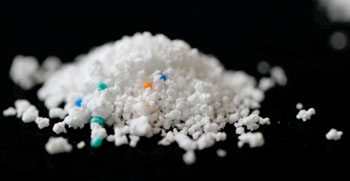X-Ray Powder Diffraction Technology Developed for Molecule Identification
By LabMedica International staff writers
Posted on 06 Aug 2014
A Danish researcher has developed a technique that uses X-rays for the rapid identification of substances present in an indeterminate powder. The new technique has the capacity to recognize sophisticated biologic molecules such as proteins. The method therefore has enormous potential in food production and the pharmaceutical industry, where it opens up, for example, new opportunities for the quality assurance (QA) of protein-based drugs. The technique was developed by a Technical University of Denmark (DTU; Kongens Lyngby) researcher. Posted on 06 Aug 2014
It is rarely sufficient to read the content information if one needs to know exactly what substances a product contains. One needs to be a very skilled chemist or to have “X-ray vision” to look directly into the molecular structure of the various substances. Christian Grundahl Frankaer, a postdoc in the DTU department of chemical engineering, is almost both, as he has developed technology that allows him to use X-rays to look deep into biologic samples.

Image: A new method makes it possible to establish very rapidly what substances—proteins and others—a product in powder form contains. For example, a quick analysis of a washing powder developed for the Danish market revealed a high level of zeolite material, which is used to bind limestone from the hard water that is so prevalent in Denmark, while a sample from Morocco contained none of this material. Analysis of another washing powder revealed that “active oxygen is simply the compound sodium percarbonate, i.e., bonded hydrogen peroxide (Photo courtesy of Iben Julie Schmidt).
The technique is called powder diffraction and involves subjecting a sample to an intense beam of X-rays. When the beam hits the sample, it disseminates in the same manner as light does when reflected by a disco ball. This generates a pattern that reflects the structure of the substance. Each individual substance has its own unique pattern, which makes it easily identifiable when the findings are run through a database.
Powder diffraction is currently used to identify basic substances such as salts, sugars, and minerals, but the theory behind using the same technique to characterize complicated biologic molecules such as proteins is groundbreaking. It is for this reason that the technology has huge possibilities in both food production and the pharmaceutical industry, where more and more attention is being dedicated to protein-based medicines.
“I have tested different types of infant milk formula, protein powders and detergents. By taking a small sample of powder and bombarding it with X-rays, I can determine what substances the powder contains, and in what concentrations, within 10 minutes. In addition, the analysis will typically reveal some information about how the product was made,” noted Dr. Frankaer. The method is therefore perfect for quality assurance of new products on the market.
Dr. Franaer added, “We have now demonstrated that powder diffraction can actually be used on biological substances such as proteins. The results are not as detailed as in single crystal diffraction, which makes it possible to decode the entire structure of the protein, but they do allow us to ‘lift fingerprints’ quickly and easily so that we can identify the protein and its crystal structure. This is valuable knowledge when you are working with the production of proteins.”
The technology has great potential in the framework of optimizing both quality and production processes in all production set-ups that involve solid substances. Applying the new approach will make it possible to check continuously for alterations in—or transformations of—different materials used in the production process. “The advantage of our method is that it allows you to take samples directly from a production line. You then have the results within 15 minutes and can tell precisely what crystalline material is involved. In addition, the X-ray beams we use can easily be generated using standard laboratory equipment,” stated Dr. Frankaer.
The promising findings are just beginning of the project, “What we want to do now is to test how far we can push the method. We have already established that it works on proteins, but will it also work on other complex products? And what happens if we take the samples to the synchrotron in Grenoble [France], where the X-ray beam is a million times more powerful than the one we have in our laboratory?” queried Dr. Frankaer.
Related Links:
Technical University of Denmark












